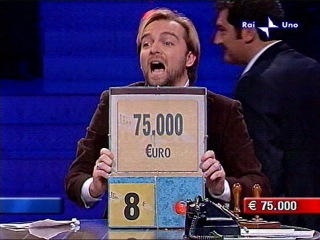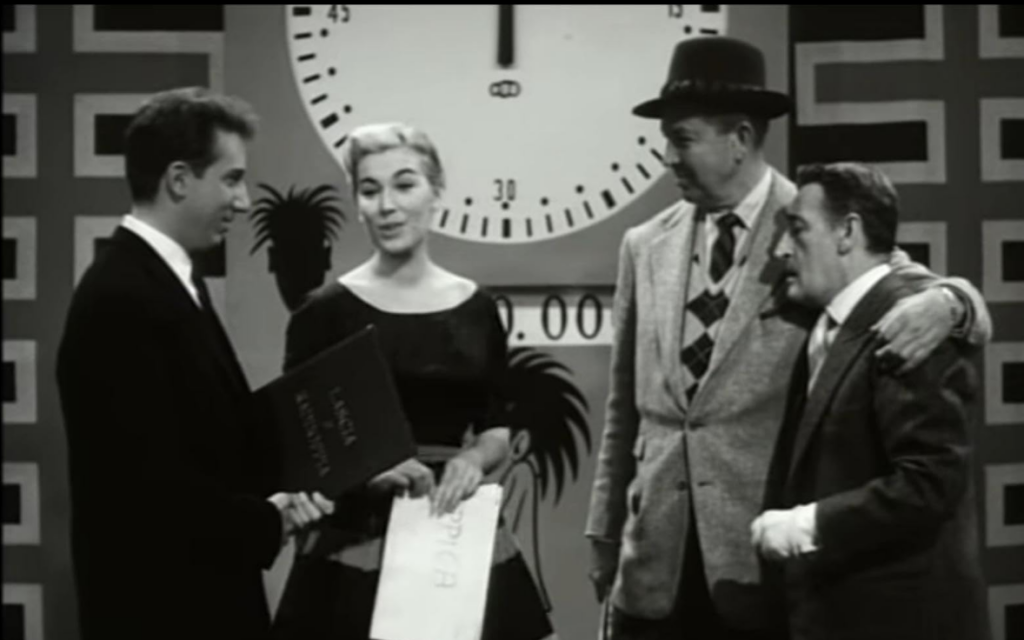As some of you might be aware, depending on your Twitter activity, I’ve spent the last three months residing in the Italian Alps.
During this time, I’ve been engrossed in studying, immersing myself in Italian culture, and, to put it mildly, creating quite a stir throughout much of Europe.
Situated in a valley at the foot of Monte del Grappa, the quaint town where our campus is situated has provided me with a genuine opportunity to experience life in a foreign country with minimal diversions (to be more precise, we only have one bar and one pizzeria; describing it as “limited distractions” would be an understatement).
It’s challenging to convey the profound insight gained from interacting with locals in a foreign country, revealing how the world operates beyond the borders of the United States.
One striking observation I’ve made is that the concept of “convenience” doesn’t quite align with what I’ve encountered here. Need to visit a store between 1 p.m. and 4 p.m.? Unfortunately, that’s during their scheduled afternoon naptime, so you’ll have to wait until they reopen.
Relying on public transportation to arrive reasonably on time? It’s more of a 50/50 gamble, so you’ll need all the luck you can get! Over time, you adapt to these quirks, but not without some initial frustration when confronted with the challenges of completing even the simplest tasks in a remotely efficient manner.
Surprisingly, what I find myself missing the most isn’t what you’d expect—family, neighbors, and friends—rather, it’s the comforts of home.
If you’ve ever spent an extended period away from your own home, whether it involved bouncing between hotels or staying in a dorm, you might relate to the longing for the return to simple pleasures that you don’t even realize you cherish until you’re back home.
In my case, that entails watching football at the appropriate time of day, having the luxury of food delivery (not to mention late-night options), and unwinding on my own couch while flipping on the TV after a tiring day.
It’s about not having hectic commitments on specific days, staying home when feeling unwell, and indulging in classic game shows like The Price is Right at 11 a.m. It’s also about savoring the back-to-back game show lineup featuring Wheel of Fortune and Jeopardy! after a day’s work.
And occasionally, on those exceptionally rare days, it’s the ability to half-heartedly tune into a Lingo marathon playing in the background while accomplishing something notably more productive at the same time.
Little did I know, during most of my stay in Italy, it wasn’t the absence of American television that prevented me from enjoying my favorite shows. It was, in fact, the absence of a suitable television set itself.
Our sole source of TV content is the Armed Forces Network on a single television set (shout-out to AFN for keeping us connected to live sports, though that’s pretty much the extent of it).
This arrangement not only deprives us of most American programming but also denies us the opportunity to gain insight into what Italians prefer to watch during their leisure time.
Despite the extensive cultural immersion we tourists experience while continuously traveling throughout the European Union, there are certain aspects of life here that we inadvertently neglect until someone points them out.
Take, for example, Italian television, which broadcasts a limited but still present assortment of game shows.
You might be wondering, “Hold on a second, this site is named This Was TV, not ‘Shows Currently Airing in Another Country,'” and you’d be absolutely right. Game Night this month is, in a way, taking a slight detour.
All the shows I’ll be discussing this month are either presently broadcasting in Italy or have recently concluded. However, in a fascinating turn of events, Italian game shows essentially function as a dynamic repository for some of the most beloved American shows from the last fifteen years.
If imitation is indeed the highest form of flattery, it seems that the Italians are quite fond of us; they genuinely appreciate our style.
None of these shows is a carbon copy of its American inspiration, much like serialized programs adapted from foreign sources don’t precisely replicate their original versions.
The quality of these adapted game shows varies, similar to how some foreign dramas evolve into series like Homeland while others end up like The Killing. This divergence often stems from both the source material and the producers’ execution.
The distinctiveness of Italy shines through in the observable differences upon initial viewing.
Not only do the technological elements depicted in each show reveal Italy’s relative lag in certain areas, but the inclusion of cultural nuances in each program provides valuable insights into various aspects of Italian customs and norms.
Based on the latest information available, Italy boasts a rather robust collection of seven game shows. Yes, even though we’re accustomed to a television landscape where shows like Wipeout have their own spinoffs, Italy’s game show lineup remains in the single digits. Among these seven shows, only one did not grace the screens at some point in the 21st century: Leave It or Double It, which, essentially, was Italy’s version of the $64,000 Pyramid and had its own share of intriguing stories during its four-year stint.
The other six shows should ring a bell for most of you: variations of Deal or No Deal (Affari Tuoi), Don’t Forget the Lyrics (Canta e Vinci), Who Wants to Be a Millionaire (Chi Vuol Essere Milionario), America’s Got Talent (Italia’s Got Talent), Wheel of Fortune (La Ruota Della Fortuna), and Are You Smarter Than a 5th Grader? (Sei Piú Bravo di un Ragazzino di 5°).
The inspiration for each of these would likely be immediately recognizable, but attempting to decipher the rules without a detailed explanation could prove to be quite challenging.

The prime example of this is Affari Tuoi, the Italian version of Deal or No Deal but without Howie Mandel and the iconic big red button (originally based on a Dutch format). It happened to be the first among this group of shows that I encountered, playing on a TV in the background at a restaurant.
My friends and I had a vague sense of recognition, but without sound and context, we embarked on an attempt to decipher what was unfolding. After roughly half an hour, we had made little progress in unraveling the rules and procedures, although we did notice some significant differences.
Believe me when I say that if I were to try explaining the rules in detail, it would be akin to teaching you Klingon on your maiden voyage aboard the Enterprise.
Despite having had them explained to me multiple times, I still struggle to fully grasp what transpires during a typical episode.
However, if you’re up for the challenge of trying to unravel them, here’s a simplified overview.
I can certainly share with you some of the most notable distinctions between Affari Tuoi and Deal or No Deal and how they impact the overall gameplay.
Similar to many international versions, contestants in the Italian version don’t use a button, but what sets the Italian version apart is its emphasis on direct interaction and maintaining eye contact when communicating.
Unlike in the United States, where you can press the button immediately upon hearing the banker’s offer, here, the host must ask you whether you accept the offer after you’ve received it.
This introduces a distinct level of control for the host in terms of pacing, establishing a connection with the contestant, and setting the overall tone of the interaction.
Furthermore, there’s a noticeable difference in the number of cases to choose from. While most versions typically feature 26 cases, Italy’s version reduces that number to 20, symbolizing the nation’s 20 regions.
Italy’s regions each carry their distinctive cultural nuances and a strong sense of regional pride (as one might anticipate in a country that has only been a unified political entity for approximately 150 years).
Consequently, it’s quite logical that these distinct regions would be prominently featured in the game.
Despite the reduced number of cases, winning Affari Tuoi is no easier than Deal or No Deal. Unlike the straightforward “choose and open” gameplay, where each case holds a fixed value, Affari Tuoi introduces more obstacles and surprises into the mix.
Contestants may encounter fake prizes and mystery boxes that can either send them home with a comically inappropriate parting gift reminiscent of a Saturday Night Live sketch or reward them with an unexpectedly substantial sum.
Italians have a penchant for enjoying themselves and embracing humor, and it’s evident that their game shows are no exception to this lighthearted spirit. There’s even a “Crazy Box” that has the potential to double (or more) the top prize but can also completely derail the outcome of the round.
While the American version of Deal or No Deal occasionally featured a $2 million prize during special events (especially towards the end of its run when it aimed to boost ratings), in Italy, such a substantial prize could materialize unexpectedly in any episode.
As complex as the gameplay might be, the set and props are far from that level of sophistication. In general, Italy lags quite a bit behind the United States in terms of the technology we often take for granted.
Attempting to load a YouTube video over a Wi-Fi connection (if one is even available) can be as frustrating as performing a dental extraction, especially if you have to administer laughing gas after every attempt.
Cell service is more or less non-existent, and trying to find pricing or schedule information for train tickets online feels more like a game of chance than a concrete plan.
Thus, it’s not at all surprising that, from a technical perspective, Affari Tuoi could easily pass for a game show you’d find on Nick at Nite back in 1994.
While it’s undoubtedly refreshing to witness a game show set that’s free from the usual stainless steel and high-tech furnishings, it can also be a bit disorienting.
The “cases” are, in reality, cardboard boxes adorned with string and sponge-painted designs, the prize values are printed on standard paper, and the graphics used throughout the show might seem more fitting for those slot machines you encounter at bar counters.
However, the most astonishing detail of all is the phone that the host uses to contact the banker—it’s a rotary phone! Come on, folks! I thought we had collectively agreed that the only suitable place for rotary phones at this point is in hipster apartments and the Smithsonian.
All in all, the set gives off more of an arts and crafts workshop vibe than the look of a professionally produced stage—quite emblematic of Italy’s overall technological state, both mentally and physically.
Certain Italian game shows underwent alterations that were beyond their control. For instance, the Italian version of Who Wants to Be a Millionaire transitioned from Chi Vuol essere Miliardario (with the last word meaning “billionaire”) to “Milionario” (“millionaire”) when Italy adopted the euro, owing to the significantly distinct values of these currencies.

However, aside from this currency-related change, there isn’t much else that distinguishes the Italian edition of “Millionaire” from other versions. It retains the same lifelines, hosting style, logo, and set design.
In the Italian adaptation of “Are You Smarter Than a 5th Grader?” the questions tend to be notably more challenging. To be frank, their fifth graders are quite astute compared to their American counterparts.
As an example, in one episode, a sample question posed was, “Name a number less than 4,000 that is divisible by the numbers two through ten.” Go ahead and try asking that to your typical 10-year-old, and you’ll likely be amazed at how swiftly they can work it out.
One of the more intriguing aspects to consider regarding the preference for producing game show adaptations over original concepts is that, in most instances, the producers possessed a clear understanding of how the show had performed in the United States.
This knowledge allowed them to make informed decisions about whether adopting a particular show was a wise choice.
Despite this insight, they made the somewhat perplexing choice to import “Don’t Forget the Lyrics.”
Now, don’t get me wrong, “Lyrics” was never a complete failure; it adequately fulfilled its role as filler when Fox needed it. However, it consistently lingered on the periphery of the game show popularity rankings.
It was never disliked enough in its first season to warrant immediate cancellation, but it also never garnered the distinction of airing new episodes more than once or twice a week.
The show did possess consistently entertaining elements, such as the amusingly bad karaoke format and the charismatic host, Wayne Brady.
Nevertheless, it’s rather curious that foreign producers opted to adapt this middle-of-the-road show, which ran for just 57 episodes, over numerous other available options.
What’s even more intriguing is that during my entire three-month stay here, I haven’t come across a single venue where Myles McNutt would have the chance to do what he does.
In a country with so few karaoke bars, it raises questions about the cultural motivation behind airing a karaoke-based competition.
Unlike the other shows mentioned earlier, this one gave the impression that it might not last beyond a single season, and this proved to be the case in Italy as well.
Also Read Team-Up Review: Freaks and Geeks, “Girlfriends and Boyfriends”
If the decision to air such a show was an experiment in introducing something contrary to the prevailing cultural norm, to see if something not typically found in the country would still resonate (we might even dub this phenomenon the “Downton Abbey Correlate”), it could be deemed unsuccessful.
Hopefully, the producers have learned that when you have the opportunity to learn from history, in this case, the success or failure of a known entity in the US, it’s probably wise to take those lessons into consideration.
One of the more intriguing aspects of the history of Italian game shows is the notable gap in their popularity. Following the conclusion of their initial successful game show, Lascia o Radoppa, in 1959, no other game show managed to attain significant popularity until Wheel of Fortune arrived in 1989.

This extended hiatus can largely be attributed to the labyrinthine bureaucracy that Italians frequently contend with. Projects that could be completed in less than a decade in the United States are frequently hindered each time the government undergoes a change, leading to protracted timelines that often double the expected duration.
Additionally, numerous companies striving to expand in spite of economic challenges find themselves constrained by antiquated and convoluted regulations.
Since Lascia o Radoppa was a state-run program, it may have initially limited opportunities until the conditions were favorable for private enterprises to develop and broadcast their own game shows.
What’s even more peculiar is that the show went off the air shortly before Italy enthusiastically embraced television in the 1960s. This decade marked the first time when it became common for every Italian family to own a TV, and the nation began importing American sitcoms to populate its newly established second channel.
While variety shows and soap operas became prevalent in these time slots, game shows remained relatively scarce.
The programs, whether American or Italian, and even some early anime, that aired during the three decades when game shows were in exile were undoubtedly entertaining and managed to captivate audiences during their evening hours.
However, waiting for a decent game show to finally return to the airwaves for a span of thirty years is undeniably a substantial wait.
This is especially true when considering that they had experienced a show as unique and idiosyncratic as Lascia o Radoppa.
Despite, and sometimes due to, the fact that it was a state-run program, the show encountered several incidents that would be highly unusual in the United States or in most other European countries today.
Given that Lascia o Radoppa was essentially the Italian version of $64,000 Pyramid, substantial sums of prize money were typically on the line.
This could become complicated when you’re dealing with taxpayer funds, and there’s not always a desire to award large sums to the contestants.
One contestant, a 23-year-old named Maria Garoppo, stirred up a bit of scandal on the show when she appeared wearing a tight and revealing red dress.
When producers asked her to refrain from repeating this attire choice, and she remained unapologetic about her wardrobe choices, they discreetly paid her the prize money she had earned and disqualified her as a contestant.
They cited her supposed need for “doctor’s care” as the reason for her departure from the show.
While it may not rise to the level of a full-blown quiz show scandal, the fact that a government-operated entity essentially offered contestants financial incentives to leave the show due to concerns over the image of their government-run station seems rather unusual, even if it was considered acceptable at the time.
Another contestant, a moderately famous Italian soccer player, found themselves thrust into the limelight. They graced the covers of dozens of magazines and were inundated with an overwhelming number of marriage proposals.
However, being one of the most celebrated contestants on the sole game show broadcast on the only channel in Italy came with its own set of challenges.
Lascia o Radoppa also gained a certain level of prestige due to being the only game show in town. It’s noteworthy that even Pope Pius XII had the time to watch the program during the 1950s and found great enjoyment in it.
He wasn’t the only high-profile fan, as Farouk I, the last king of Egypt who was exiled to Italy, was also an enthusiastic viewer.
In fact, he generously matched the prize winnings of a young contestant when she could no longer continue competing due to emotional reasons.
It’s regrettable that the direction of Italian television shifted after “Lascia o Radoppa” went off the air.
However, this shift ultimately provided a fertile opportunity for adapted game shows in the late ’80s to flourish rather than facing an audience already fatigued by decades of imitations.
In summary, Italian game shows are peculiar yet enjoyable creations. The fusion of the framework from US shows with Italian cultural nuances has proven successful for many of the programs currently on the air, and there’s no sign that this trend won’t persist in the future.
Nevertheless, the overall appeal of the game show genre in Italy would greatly benefit from the development of original programming alongside the existing adaptations.
It’s my hope that this surge in creativity takes place before they exhaust the pool of popular shows to modify.


